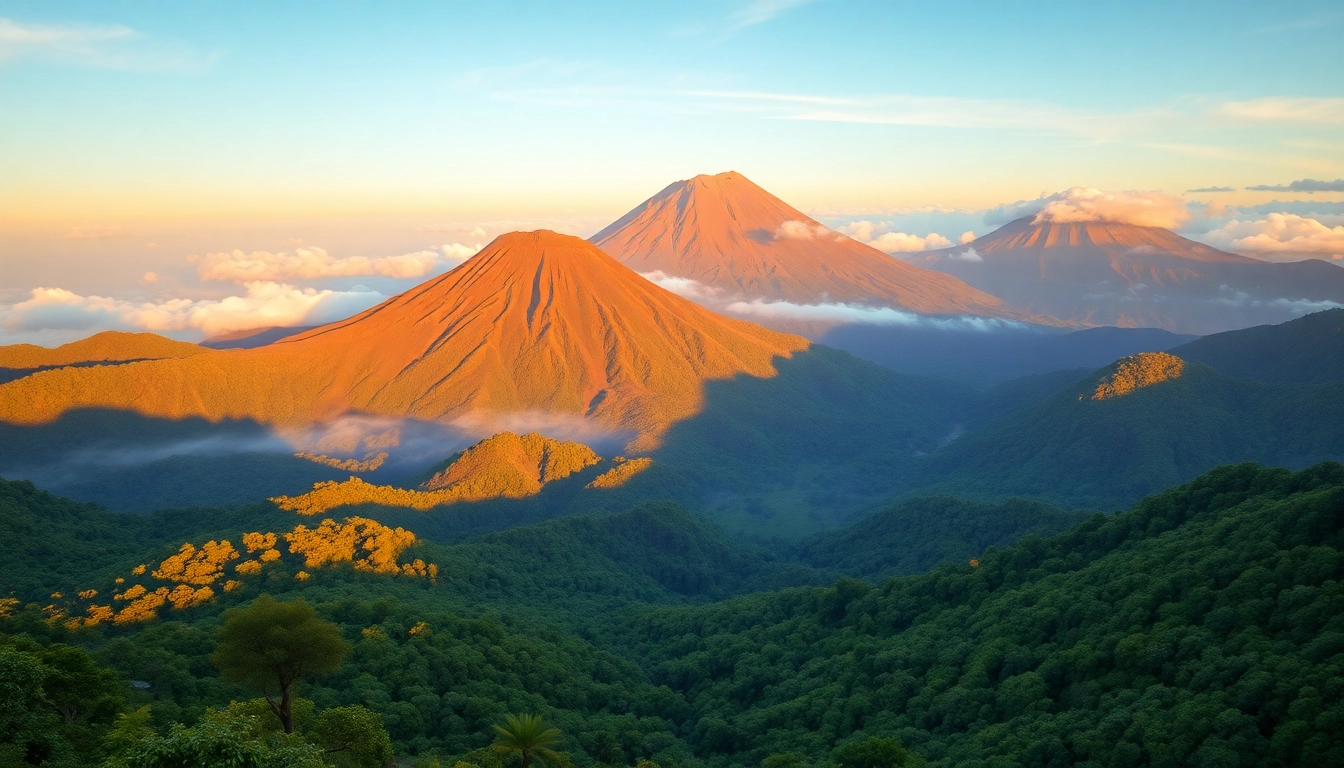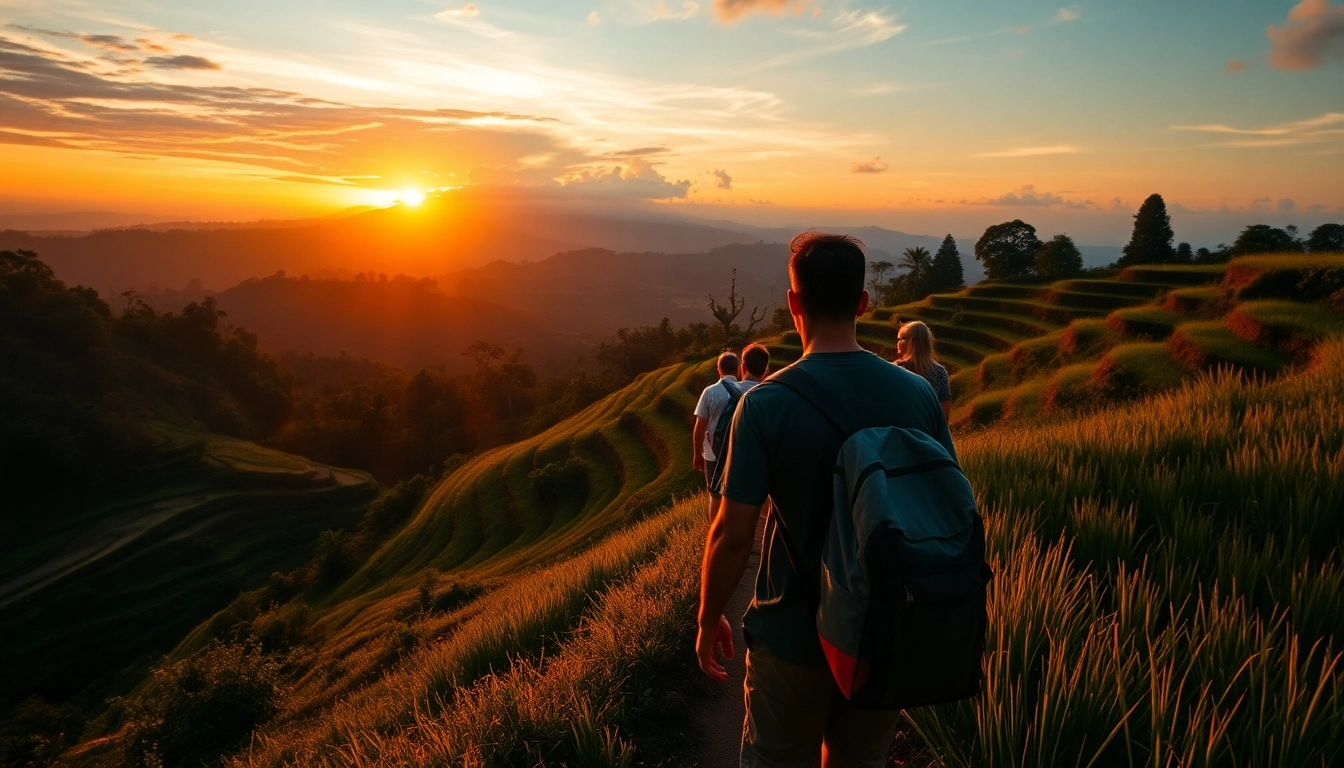Introduction to Mount Rinjani
Perched majestically on the island of Lombok, Indonesia, Mount Rinjani is a symbol of natural grandeur and cultural richness. As the second-highest volcanic peak in Indonesia, it stands at 3,726 meters (12,224 feet) above sea level, captivating adventurers, nature lovers, and researchers alike. Its imposing presence and diverse ecosystems make it a focal point for both tourism and scientific study, positioning it as a must-visit destination for those seeking a deep connection with Indonesia’s volcanic heritage and untouched wilderness.
Geographical Location and Significance
Geographical Context
Mount Rinjani is situated on the northern part of Lombok, within the Rinjani National Park, which spans over 41,330 hectares of pristine land. It is part of the Lesser Sunda Islands, a chain renowned for their volcanic activity. The mountain’s precise location coordinates are approximately 8°25′S 116°28′E, anchoring it amidst a complex bio-geographical transition zone known as Wallacea—a unique ecological region that hosts a blend of Asian and Australian flora and fauna.
Volcanic and Geological Importance
As an active stratovolcano, Rinjani’s eruptive history significantly influences both the island’s geography and local communities. The mountain’s caldera, approximately 6 km in diameter, hosts a thermal lake, Segara Anakan, which is a prominent feature of the volcanic landscape. Its geological formation results from millions of years of tectonic activity, with the last known eruption occurring relatively recently, in 2016, marking its ongoing volcanic dynamism.
Historical and Cultural Background
Historical Significance
Historically, Mount Rinjani has played a pivotal role in the civilizations of Lombok. The mountain is believed to be the remnant of the ancient Gunung Samalas, whose eruption in 1257 is one of the most powerful in recorded history, believed to have caused a global “volcanic winter” and climate cooling. This event left a deep imprint on regional histories, shaping local mythologies and agricultural practices.
Cultural and Spiritual Heritage
For the Sasak, the indigenous people of Lombok, Rinjani is more than just a natural wonder—it holds spiritual significance. The mountain features prominently in local folklore and religious rituals, symbolizing life, fertility, and ancestral connections. Many trails lead to sacred sites where indigenous communities perform offerings and ceremonies, embodying a symbiotic relationship between people and nature.
Unique Features of Mount Rinjani
Natural Phenomena and Biodiversity
Mount Rinjani boasts a rich tapestry of biodiversity, including endemic species like the Lombok Bush Warbler and the Rinjani Scops Owl. Its diverse ecosystems range from tropical rainforests at lower elevations to alpine meadows near the summit. The mountain’s geothermal activity generates hot springs, fumaroles, and stunning waterfalls, making it a hotspot for natural attractions.
Scenic Attractions and Ecosystems
The crater lake, Segara Anak, is a breathtaking sight—its emerald waters contrasting with volcanic landscapes. The surrounding savannahs and forests are visually stunning and support a myriad of wildlife. Additionally, the mountain offers panoramic views of the surrounding islands, including Bali and Sumbawa, providing unparalleled vistas that appeal to photographers and trekkers alike.
Planning Your Rinjani Trekking Adventure
Best Time to Visit and Weather Conditions
The optimal trekking seasons on Mount Rinjani are during the dry season, typically from April to October. During this period, weather conditions tend to be stable, with less rainfall, clear skies, and more manageable temperatures—ranging from 10°C at the summit to 25°C in the lower areas. The rainy season (November to March), while offering lush landscapes, presents challenges such as slippery trails, increased risk of landslides, and unpredictable weather that can hinder safety and visibility.
Necessary Equipment and Preparation Tips
Preparation is critical for a safe and enjoyable Rinjani climb. Essential gear includes sturdy hiking boots, layered clothing for temperature fluctuations, warm sleeping bags, waterproof jackets, headlamps, trekking poles, and sufficient food and water. High-altitude acclimatization, physical conditioning, and mental resilience also fuel successful ascents. Consulting a guide or outfitter provides tailored advice on gear and terrain readiness, reducing risks of altitude sickness, dehydration, or injuries.
Choosing Guided Tours and Permits
Many trekking companies offer guided expeditions for different experience levels, ensuring safety, local expertise, and logistical support. Securing permits in advance is mandatory, involving fees paid to local authorities and park management. Reputable guides often include permits in their packages, streamlining the process. Ethical operators emphasize responsible tourism, respecting local communities and protecting the environment.
Trail Routes and Hiking Experience
Popular Trekking Routes and Difficulty Levels
Rinjani offers several routes, with the Sembalun and Senaru trails being the most used. The Sembalun route is approximately 27 km, known for its gentle ascent, panoramic views, and a variety of ecological zones. In contrast, the Senaru route is longer, steeper, and more challenging but rewards hikers with scenic waterfalls and jungle landscapes. Difficulty ranges from moderate to strenuous, demanding stamina and preparedness for high-altitude trekking.
Highlights and Scenic Spots Along the Trek
Key highlights include sunrise views from the summit, the breathtaking crater lake Segara Anak, the hot springs near the lake, and the lush forests filled with abundant wildlife. Trekking through different ecological zones offers a dynamic experience, from tropical rainforests to alpine tundra, each with its own unique flora and fauna. Iconic spots like the Tereke Valley or the viewing points on Sembalun provide memorable vistas for trekkers.
Safety Tips and Common Challenges
Safety remains paramount; trekkers should be vigilant against altitude sickness, dehydration, and weather changes. Hydration, proper pacing, and acclimatization are critical. Common challenges include unpredictable weather, slippery trails, and fatigue. Carrying appropriate gear, following guides’ instructions, and staying within designated paths mitigate these risks. Emergency procedures and first aid kits should be standard inclusion for all expeditions.
Wildlife, Flora, and Natural Attractions
Flora and Fauna Within Rinjani National Park
The park’s ecosystems support diverse species such as giant ferns, orchids, and endemic birds like the Rinjani Scops Owl. Its forests are vital habitats for mammals including monkeys, civets, and occasionally langurs. The park’s rich biodiversity underscores its importance for conservation, with ongoing efforts to protect endangered species and their habitats.
Waterfalls, Hot Springs, and Other Sights
Scenic waterfalls like Sendang Gile and Tiu Kelep near Senaru offer refreshing resting points. The hot springs, especially those near Segara Anak, provide relaxation after strenuous hikes, and their mineral-rich waters are believed to have therapeutic properties. Other attractions include the crater rim viewpoints, traditional villages, and culturally significant sites, deepening the travel experience.
Conservation and Responsible Tourism
Preserving Mount Rinjani’s pristine environment requires responsible tourism practices such as minimizing waste, respecting local customs, and following park regulations. Visitors are encouraged to carry out all trash, limit campfire use, and stay on designated trails. Supporting local communities by choosing local guides, buying local products, and engaging in eco-friendly activities fosters sustainable development and environmental stewardship.
Post-Trek Considerations and Tourism Opportunities
Accommodations and Local Culture
After conquering Rinjani, travelers can relax in a variety of accommodations ranging from basic homestays to luxury lodges like the Rinjani Lodge. Embracing local culture involves participating in traditional Sasak music and dance performances, visiting local markets, and learning about daily life and customs—an enriching experience that complements trekking adventures.
Other Attractions in Lombok and Nearby Islands
Lombok’s attractions extend beyond Rinjani. Visitors can explore pristine beaches such as Senggigi and Kuta, dive into vibrant coral reefs, or visit Gili Islands famous for their crystal-clear waters and vibrant marine life. Cultural sites like Sukarara weaving village and traditional Sasak villages provide insights into local craftsmanship and heritage.
Environmental Impact and Sustainable Travel
Sustainable tourism is vital for maintaining the area’s natural beauty and ecological balance. Visitors are encouraged to reduce plastic use, support eco-friendly accommodations, and participate in conservation programs. Promoting awareness about environmental challenges and empowering local communities ensures that future generations can also enjoy the wonder of Mount Rinjani.

